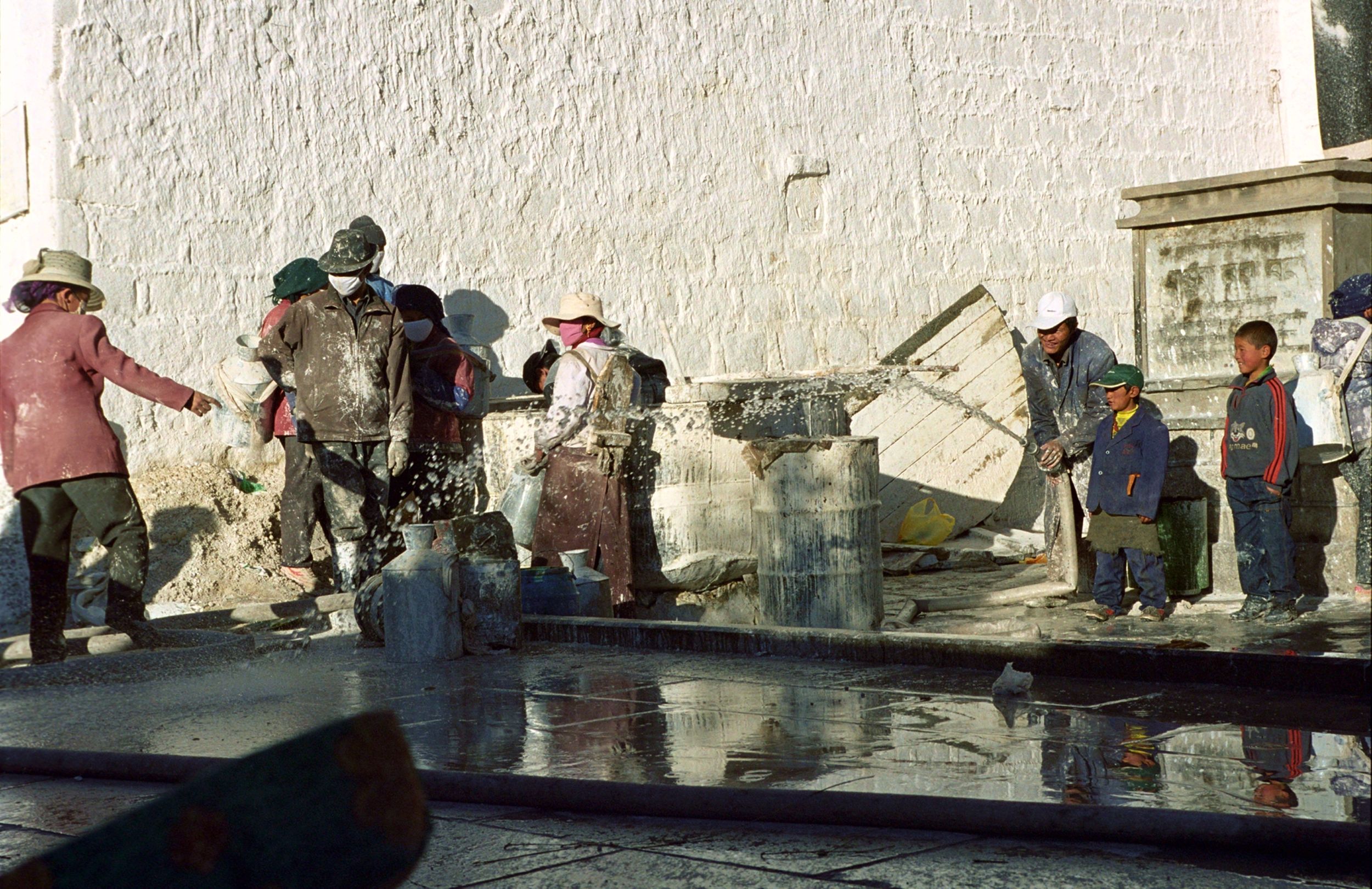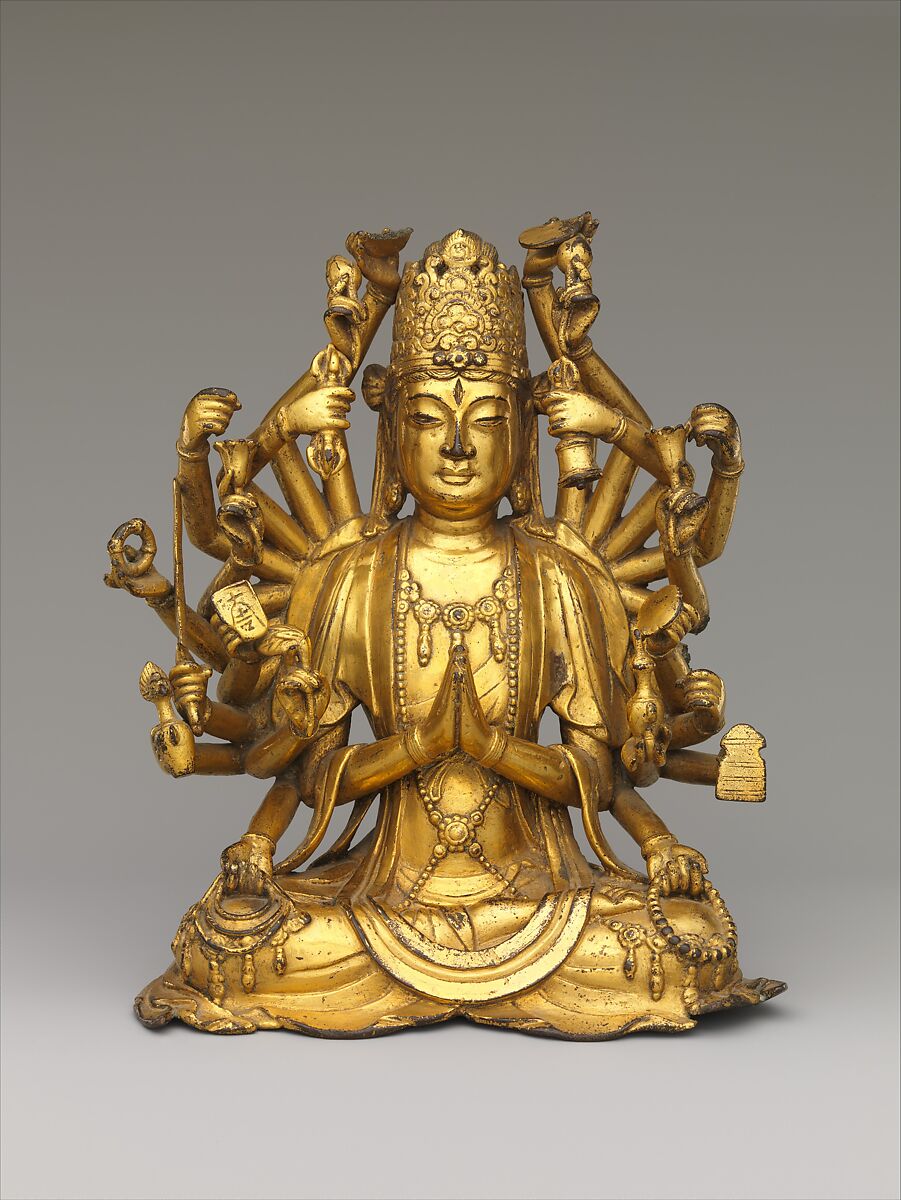This esoteric form of Avalokiteshvara holds a range of attributes in his twenty-four hands, including the sun, the moon, a vajra, and a bell. Multiarmed, powerful tantric forms of Avalokiteshvara were introduced into East Asia by the monk Amoghavajra as part of an eighth-century effort to repel Tibet’s military expansion across Central Asia. Later, this protective form of Avalokiteshvara, who is able to aid his numerous devotees with his many arms, became especially popular in Tibet after the north Indian monk Atisha (980–1054) emphasized this tantric deity.
信息资料
| 时间 | 11th–12th century |
|---|---|
| 地点 | China, Yunnan Province |
| 主题 | 艺术展览 |
| 科目 | Sculpture |


